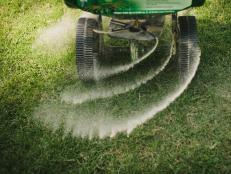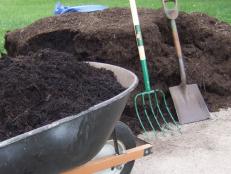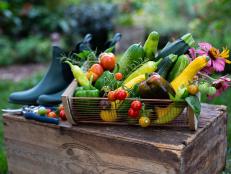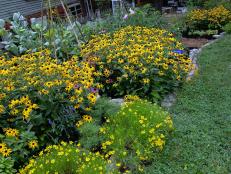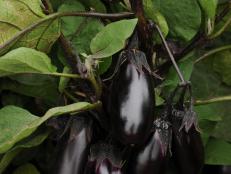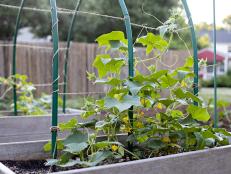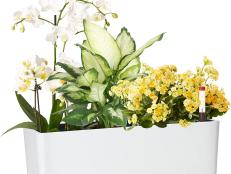Grow a Cover Crop in the Fall to Benefit Next Spring's Garden
Cover crops (aka - living mulch or green manure) improve garden soil with nutrients and organic matter. Plus they help suppress weeds, diseases and unwanted pests, as well as minimize erosion.

As the active gardening season winds down, the time to think about next year’s garden is coming up. Planting a cover crop to replace those spent summer vegetables can improve the soil for next year’s kitchen garden, whether you plant in the ground or in raised beds. An off-season crop that will mask the bare ground may even provide produce for fall and winter.

Buckwheat
A cover crop — a fast-growing annual planted in late summer or fall and plowed under before planting time in spring — prevents soil erosion over the winter, but more importantly, it provides organic matter to improve soil structure and nutrients to boost growing conditions. Farmers and gardeners may refer to a cover crop as “green manure” because of its beneficial properties. A fall-planted crop can also suppress weeds and provide habitat for beneficial insects and pollinators.
Types of Cover Crops
Green manure crops can be legumes, such as clover, alfalfa, vetch, peas and beans, or non-legumes, grasses like annual rye, millet, wheat and oats. Some brassicas, such as mustard, turnips and radishes, may also be grown as cover crops.
Legumes have deep roots that help improve soil drainage and bring nutrients up from the deeper soil where they benefit shallow-rooted plants. The roots of legumes also have nodules that contain bacteria that produce nitrogen — essential to successful plant growth — in the soil.
The grassy cover crops — non-legumes — grow quickly and can produce large amounts of organic material for the soil in a short time. Before the seed matures, the crop can be chopped and left to decay on the soil surface or tilled into the soil.
Go With More Than One

Peas and Oats
Mixing two or more types of seeds and broadcasting them over the ground or in raised beds provides benefits of both types. Some will die off after a frost and the remains can be easily plowed under in the spring along with the plants that are more cold-hardy. If cover crops are turned under, allow about six weeks for the plants to decay before planting the desired crop in the spring.
“The combination improves fertility and tilth [the physical condition of the soil],” notes Renee Shepherd, founder of the seed company Renee’s Garden, based in Felton, California. Renee’s Garden and many other seed companies offer mixes for smaller-scale gardens that combine seeds of legumes and non-legumes to scatter over the soil.
Suggested Plants for Cover Crops

Alfalfa
Alfalfa: A legume with deep tap roots that help loosen the soil and improve soil structure. Alfalfa has high protein and mineral content.
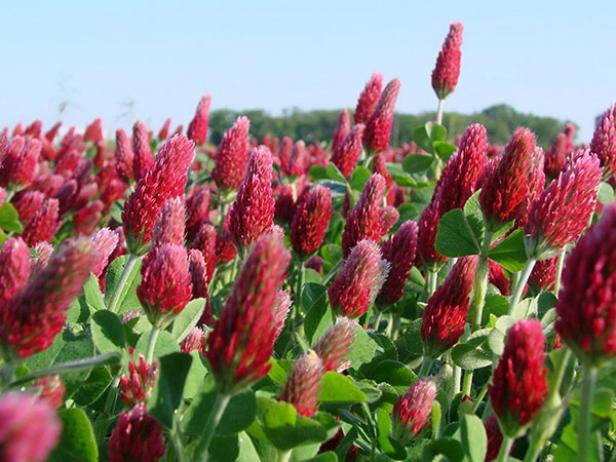
USDA
Crimson Clover
Crimson clover: The flowers of this legume attract bees and other pollinators. The roots fix nitrogen in the soil.

Southern Exposure Seed
Hairy Vetch
Hairy vetch: This cold-hardy legume helps prevent runoff, fixes nitrogen in soil and suppresses weeds.

Southern Exposure Seed
Buckwheat
Buckwheat: A non-legume that matures quickly, prevents soil erosion and covers the soil to keep weeds at bay.
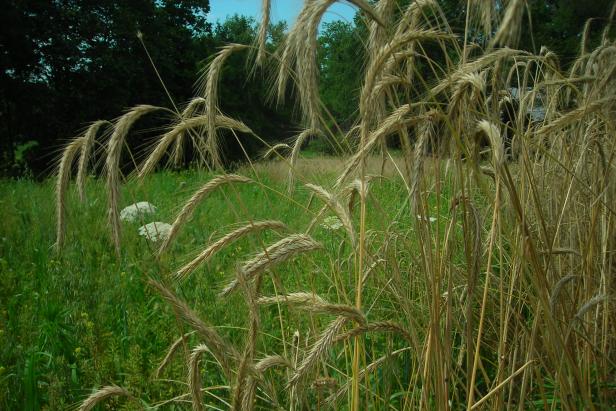
Southern Exposure Seed
Rye
Annual rye: This non-legume’s dense roots help break up compacted soil. Annual rye germinates and grows quickly in cool temperatures.
Edible Cover Crops
Cover crops are meant to be turned into the soil to improve the structure and nutrients. They are usually mowed down, chopped up or turned under, often before they reach maturity. But gardeners and farmers also know the benefits of using some of the brassicas as cover crops, and in that case, who’s to say you can’t also use it for the dinner table? Some favorites:

Shutterstock/AndrisL
Daikon Radish
Daikon radish: This Asian radish forms a long, thick tuber that grows down through hard soil. Left in the ground, the root decays and loosens the soil. In the kitchen, you can find recipes to use daikon radish roasted, boiled, baked, braised, steamed or eaten raw.

Renee's Garden
Mustard Greens
Mustard: This brassica grows quickly to form a thick cover over the ground and prevents erosion, suppresses weeds, aerates, and brings nutrients to the soil’s upper levels. If you choose to try it for dinner, cut leaves from the plants and wash them well. Mustard greens have a mildly tangy, peppery flavor, and can be sautéed, braised, simmered or mixed with other greens for a nutritious side dish.







